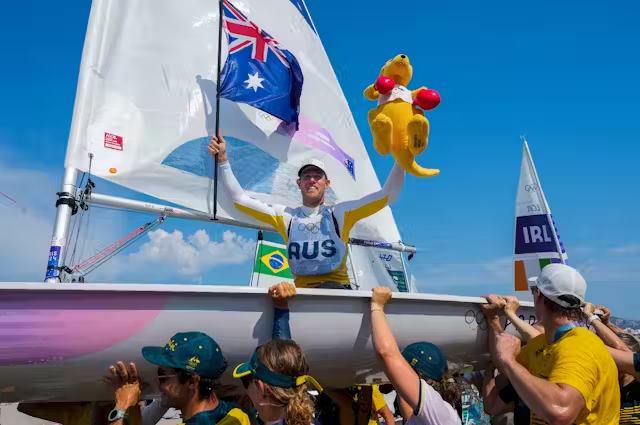Thomas Cuckston, University of Birmingham
Ahead of the 2024 games in Paris, the International Olympic Committee (IOC) asked all Olympic sports to prepare sustainability strategies. Sustainability, it said, was central to the Olympic movement. But some sports didn’t respond at all, and there is a wide gap between the best and worst performers.
Ready for a challenge? Click here to take our quiz and show off your knowledge!
Colleagues and I at the University of Birmingham’s Centre for Responsible Business have analysed the published sustainability strategies of the 34 international federations that between them govern all permanent Olympic sports.
Our aim in studying these publicly available strategy documents was not to assess a sport’s current measures of sustainability, such as its carbon emissions, but rather to evaluate each international federation’s level of engagement and ambition. The documents give us a sense of each sport’s future direction.
We gave each strategy a quality rating: gold, silver, bronze, or DNF (did not finish), giving us a sustainability leaderboard of Olympic sports.
Ready for a challenge? Click here to take our quiz and show off your knowledge!
Our analysis took account of various different factors. For instance, we looked at whether topics relevant to sustainability were covered, like climate change, nature and human rights. We looked at whether the strategies had measurable targets (on carbon emissions or recycling, for instance) and a commitment to reporting on progress. And we also looked at whether sustainability was incorporated into the overall strategic vision for the sport.
Olympic sports: sustainability strategy leaderboard
Out of 34 Olympic sports, only seven achieved a “gold” rating, demonstrating clear leadership within the Olympic movement. These were: athletics, biathlon, hockey, rugby, sailing, skating and skiing/snowboarding.
Twelve sports received a DNF rating, including tennis, basketball and gymnastics. Those sporting bodies have provided negligible public evidence of engagement with sustainability.
What they’re doing right
What do the seven sports leading this race have in common? All have developed sustainability strategies that cover not just their own corporate operations (their headquarters, suppliers and staff), and not even just the sporting events they hold (like the Olympics and world championships), but also the worldwide family of sports participants and spectators.
It is this third sphere of influence that makes sport such a potentially powerful force for promoting sustainability, as it can inspire millions of people across the planet to take action.
Sustainability is made more meaningful for people when they can see how planetary challenges are affecting the sports about which they are passionate. Examples include:
- World Athletics has signed a partnership with the United Nations Environment Programme to campaign on the issue of clean air. Air quality is important for athletic performance. World Athletics-certified tracks are being asked to work with local governments to set and monitor clean air targets. This way, athletics can be used as leverage to improve the health and lives of local communities.
- The sustainability strategies for biathlon (a sport that combines cross country skiing and rifle shooting) and ice skating both highlight their dependence on snow and ice, and thus (for outdoor versions of these sports) on cold winter climates. Athletes are acutely aware of the effects that climate change is having on the viability of their sports. Both sports have instituted ambitious carbon emissions reduction targets as a way to raise awareness and inspire wider action on climate change.
- Rugby is hugely popular in some low-lying Pacific island nations, like Fiji, Tonga and Samoa. With these nations so vulnerable to climate change, World Rugby became one of the first sports to sign the UN’s Sports for Climate Action initiative.
- Sailing is a sport dependent on the world’s waters. World Sailing sees the protection of these waters as part of its organisational mission. Its sustainability strategy includes modifying technical standards and regulations for equipment to reduce waste, hazardous chemicals and pollution.
While some sports are showing impressive leadership, others are falling behind. Some are not showing any signs of engagement with sustainability. Some are lacking ambition, limiting their sustainability strategies to small-scale efforts focused only on their own corporate offices, like encouraging employees to use less paper or to cycle to work. While such actions are creditable, this is a missed opportunity. Billions of people are watching the Olympics in Paris. Those governing our sports have a vital responsibility to use this incredible platform wisely.
Thomas Cuckston, Professor of Accounting and Ecology, University of Birmingham
This article is republished from The Conversation under a Creative Commons license. Read the original article.

